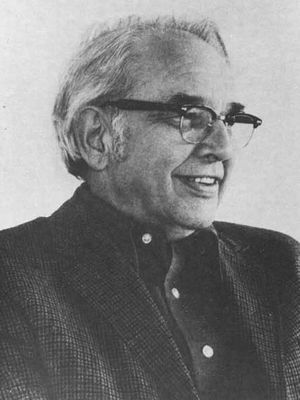Electronic-Digital Computer: Difference between revisions
From ETHW
(New page: '''This article is a stub. Please help expand the article by using the edit tab.''' thumb|center|John V. Atanasoff In October 1939 in Ames, Iowa, [[John V. Atanasof...) |
No edit summary |
||
| Line 1: | Line 1: | ||
'''This article is a stub. Please help expand the article by using the edit tab.''' [[Image:Atanasoff.jpg|thumb|center|John V. Atanasoff]] In October 1939 in Ames, Iowa, [[John V. Atanasoff|John Vincent Atanasoff]], assisted by his graduate student, Clifford E. Berry, constructed a prototype for the [[Milestones:Atanasoff-Berry Computer, 1939|first electronic-digital computer]], conceived in 1937. Its principles, including [[Binary Numbers and Binary Math|binary numbers]], would be central to the future development of computers. | '''This article is a stub. Please help expand the article by using the edit tab.''' [[Image:Atanasoff.jpg|thumb|center|John V. Atanasoff]] In October 1939 in Ames, Iowa, [[John V. Atanasoff|John Vincent Atanasoff]], assisted by his graduate student, Clifford E. Berry, constructed a prototype for the [[Milestones:Atanasoff-Berry Computer, 1939|first electronic-digital computer]], conceived in 1937. Its principles, including [[Binary Numbers and Binary Math|binary numbers]], would be central to the future development of computers. | ||
[[Category:Computers_and_information_processing]] [[Category:Computer_classes]] | |||
Revision as of 21:08, 16 December 2009
This article is a stub. Please help expand the article by using the edit tab.
In October 1939 in Ames, Iowa, John Vincent Atanasoff, assisted by his graduate student, Clifford E. Berry, constructed a prototype for the first electronic-digital computer, conceived in 1937. Its principles, including binary numbers, would be central to the future development of computers.
